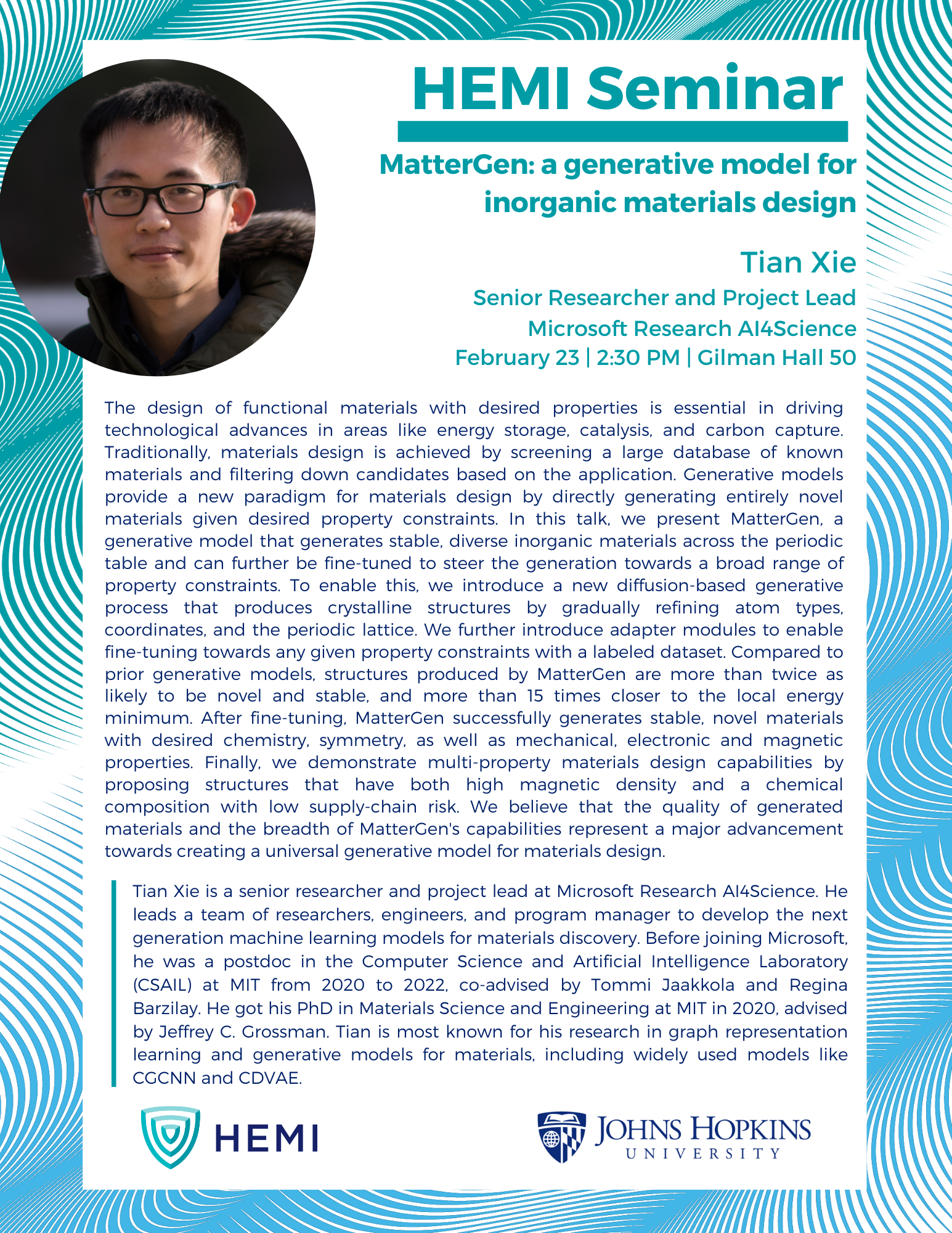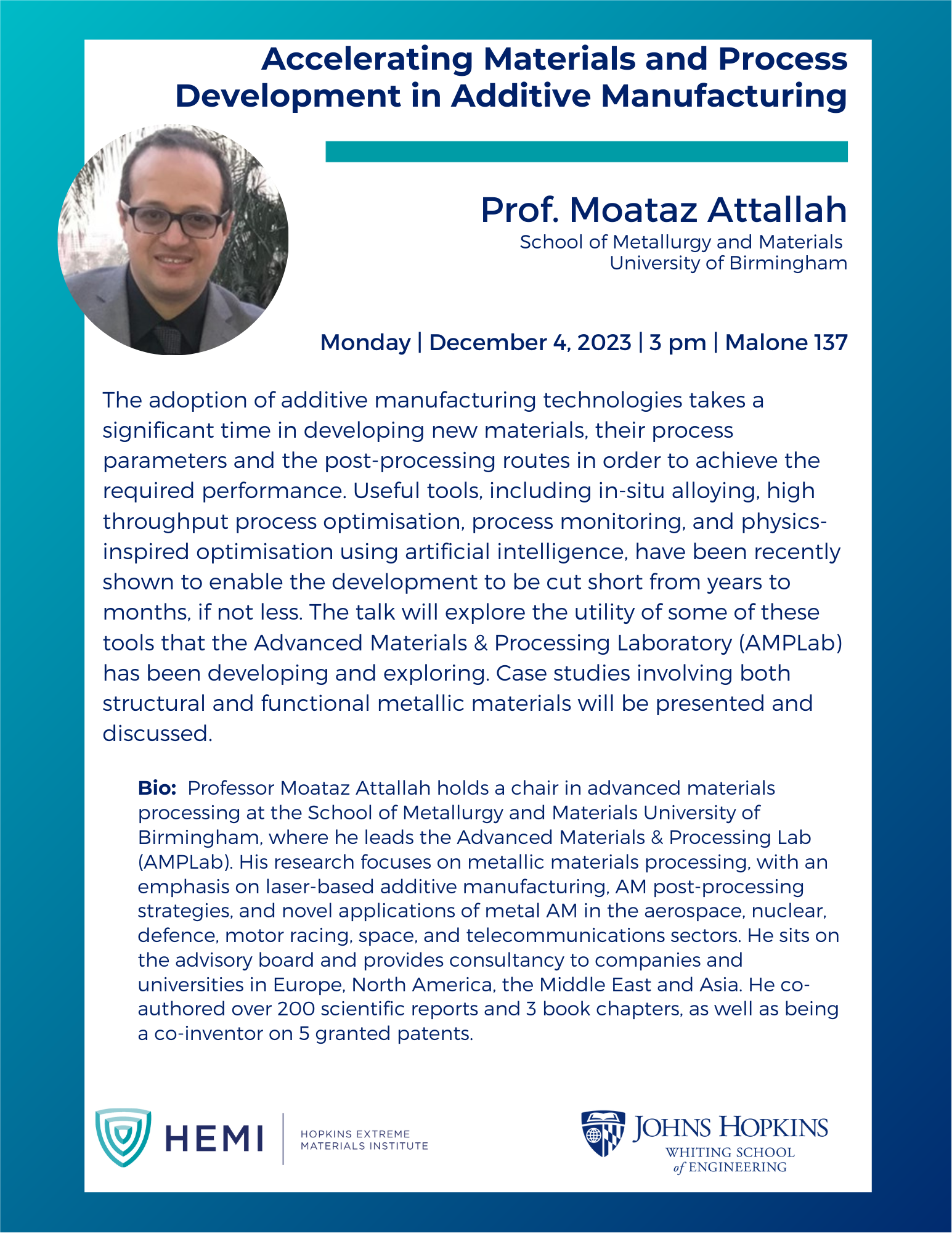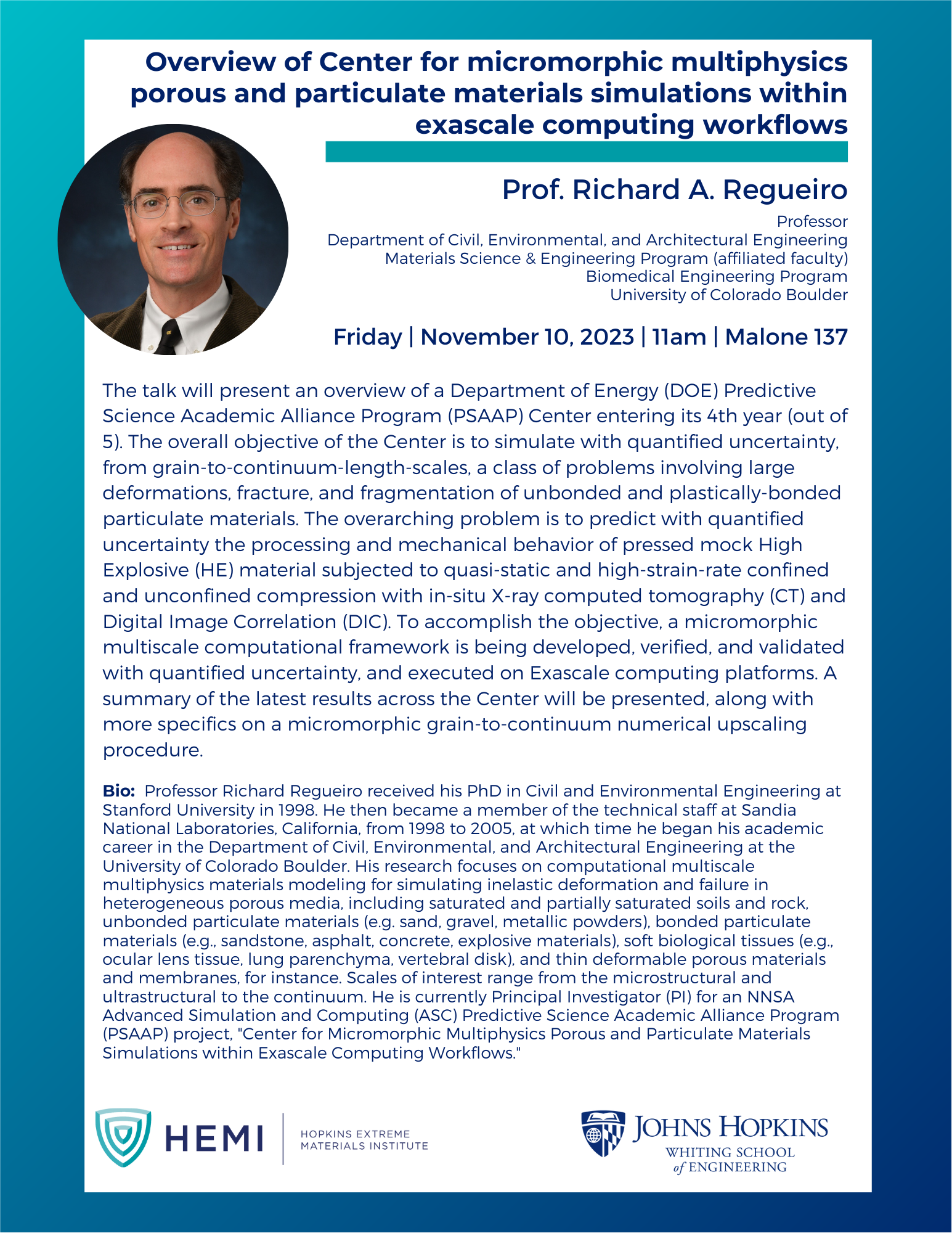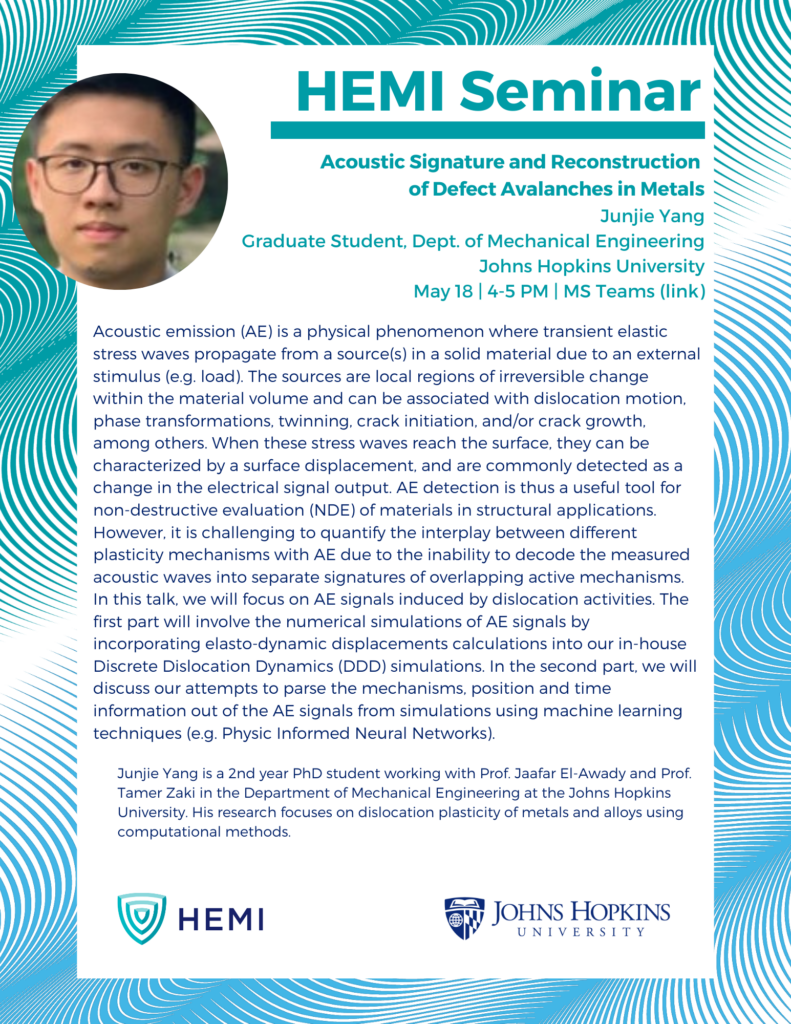Please join us for a seminar with Thomas Voisin, deputy group leader for Metallurgy and Advanced Microscopy and staff scientist in the Materials Science Division at Lawrence Livermore National Laboratory (LLNL). The seminar is titled “Microstructures, deformation mechanisms, and corrosion properties of additively manufactured 316L stainless steels.”
The seminar will begin at 10:30 AM on Friday, May 31 in Malone Hall G33/35.
Abstract: At LLNL, laser powder-bed-fusion (L-PBF) has become an additive manufacturing (AM) technique of choice to manufacture complex components, but also to obtain materials with enhanced properties. Rapid thermomechanical cycles during L-PBF retain non-equilibrium microstructures in as-fabricated metallic alloys, most often resulting in improved properties. For L-PBF 316L stainless steels (316LSS), this means breaking the strength/ductility tradeoff and improving resistance to pitting corrosion in seawater.
For mechanical properties, rapid-solidification cellular structures provide an explanation for the significant increase in strength, but much is left to understand concerning the high ductility. We will show that specific dislocation configurations at cell walls trigger mechanical twinning at low stress, which enhances plasticity.
For corrosion, prior studies have shown that the high resistance to pitting in seawater is due to the absence of Mn sulfides. However, pitting mechanisms on as-built surfaces remain largely unknown. We will show that slags that form during LPBF act as pit nucleation sites and the surface oxide on as-built parts contains a thin layer of Mn-rich silicon oxide that formed at high temperature during LPBF, offering exceptional corrosion protection.
This work was performed under the auspices of the U.S. Department of Energy by LLNL under Contract DE-AC52-07NA27344.
Bio: Thomas Voisin is deputy group leader for Metallurgy and Advanced Microscopy and staff scientist in the Materials Science Division at LLNL, leading several projects investigating the relationship between processing, microstructures, and mechanical or corrosion properties of additively manufactured metallic alloys. He is involved in various activities, including fundamental study of plastic deformation of metals and development of new high entropy alloys (refractory and eutectic). More generally, Thomas actively focuses on developing a coherent research group where different in-situ characterization techniques, from atomic to macroscopic scales, work together to accelerate our understanding of metals properties.







